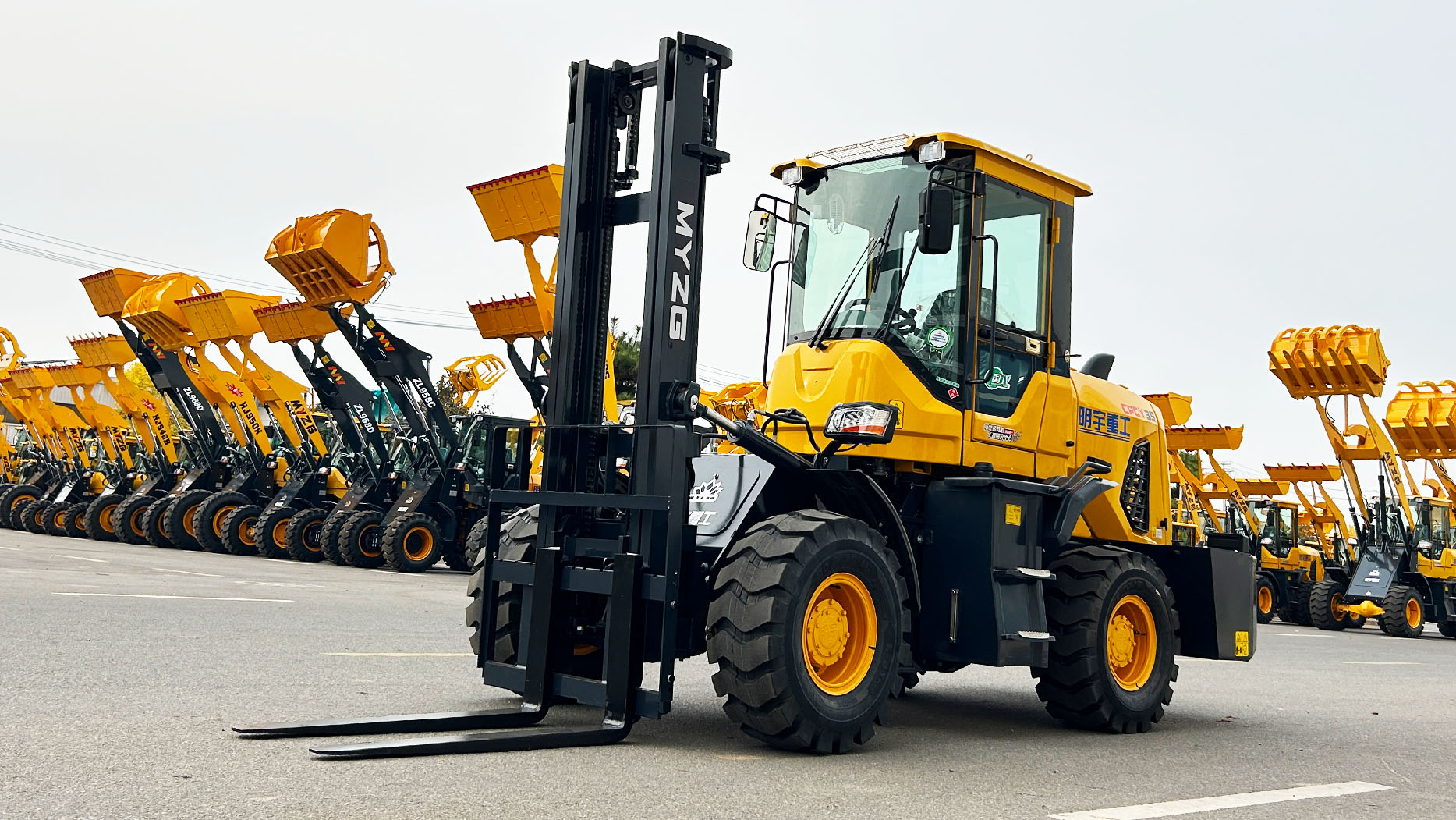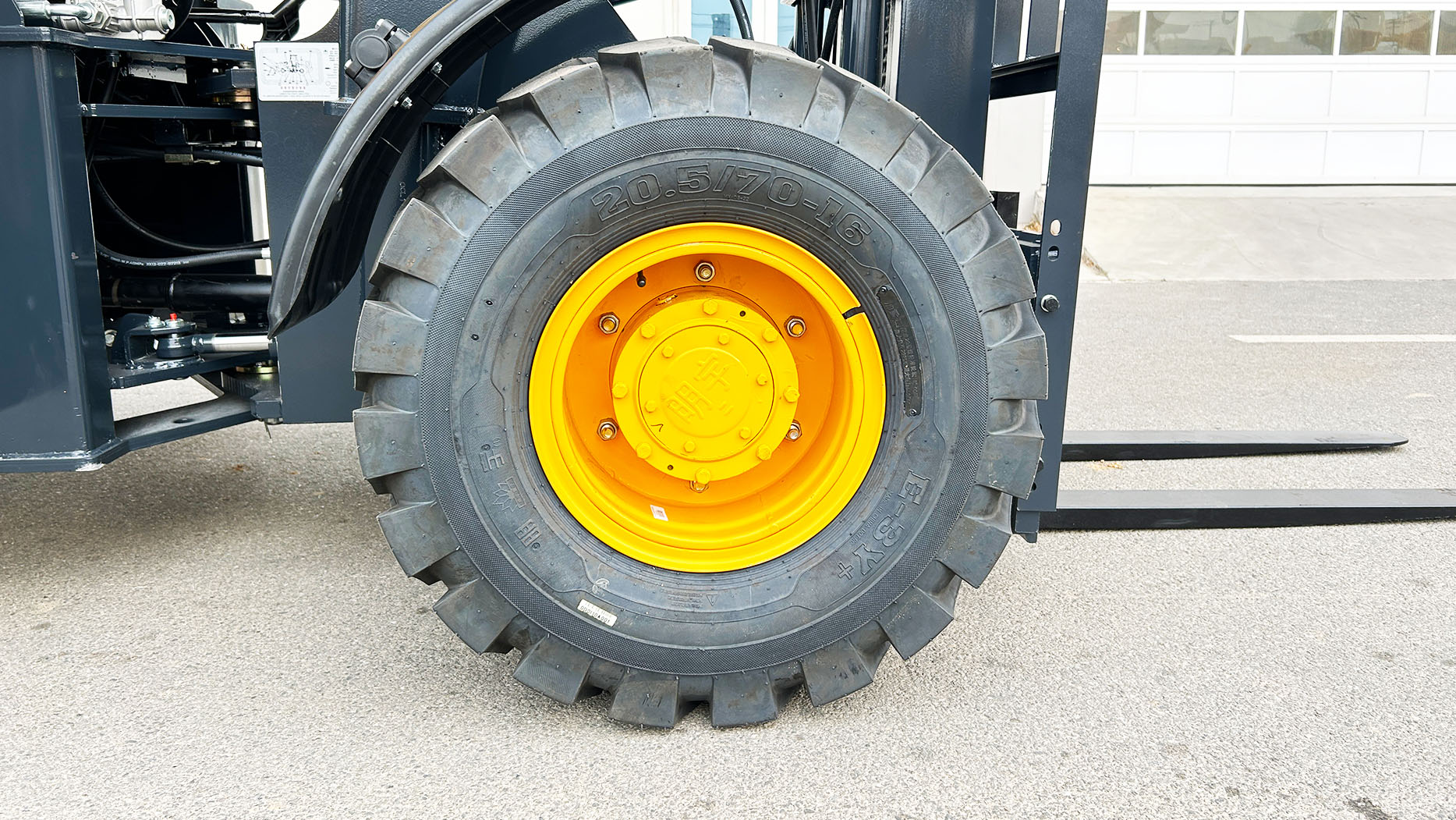I. Introduction
Off-road forklifts are essential tools in industries that demand material handling in challenging environments, from construction sites with uneven terrain to agricultural fields with varying soil conditions. These rugged machines are designed to navigate obstacles and maintain stability while lifting and transporting heavy loads. However, selecting the appropriate lifting capacity is crucial for ensuring both safety and operational efficiency. Overestimating can lead to unnecessary costs, while underestimating can result in dangerous overloading and potential accidents. This article provides a systematic approach to choosing the right lifting capacity for your off-road forklift, considering load characteristics, terrain, and operating conditions, to optimize performance and minimize risks.
II. Understanding Lifting Capacity
A. Rated Capacity vs. Actual Capacity:
The rated capacity, specified by the manufacturer, indicates the maximum weight the forklift can lift under ideal conditions. However, the actual capacity can vary depending on factors like load center and lift height. The load center, the distance from the front face of the forks to the load's center of gravity, significantly impacts the forklift's stability and lifting capacity.
The forklift's data plate provides essential information about its capabilities, including the rated capacity and load center. Understanding how to read and interpret this information is crucial for safe operation. The plate will show the rated capacity at a specified load center. Deviations from this load center will reduce the forklift’s safe lifting ability.
C. Factors Affecting Lifting Capacity:
Lift height reduces the forklift's capacity as the center of gravity shifts. Attachments, such as clamps or side shifters, also reduce capacity by adding weight and changing the load's center of gravity. Ground conditions, such as slopes or uneven surfaces, affect stability and reduce the forklift's effective lifting capacity.
III. Analyzing Your Lifting Needs
A. Identifying the Loads:
Begin by identifying the weight, size, and shape of the most common loads you will be handling. Consider the heaviest and most awkward loads, as these will determine the minimum required lifting capacity. Be sure to account for the weight of any pallets or containers used.
B. Load Distribution and Stability:
Understanding the load's center of gravity is essential for safe handling. Distributing the load evenly on the forks is crucial for maintaining stability. Unevenly distributed loads can lead to tipping and accidents.
C. Operating Environment:
Terrain conditions significantly impact the forklift's performance. Slopes, uneven ground, and obstacles require a forklift with greater stability and lifting capacity. Weather conditions, such as rain, snow, or mud, can affect traction and stability. Space constraints and maneuverability requirements also play a role in choosing the right forklift.
D. Future Needs and Scalability:
Anticipate potential changes in load requirements and choose a forklift with enough capacity for future growth. Consider the long term need, and do not only focus on the immediate needs.
IV. Off-Road Forklift Features and Capacity
Off-road forklifts are available in various classes, each with different lifting capacity ranges. Understand the typical lifting capacities for each class and choose one that meets your specific needs.
B. Tire Types and Stability:
Tire selection plays a crucial role in stability and capacity on different terrains. Larger tires with aggressive tread patterns provide better traction and stability on rough surfaces. Consider tire size, tread pattern, and inflation when choosing an off-road forklift.
C. Mast Types and Lift Heights:
Mast height affects lifting capacity at different elevations. Choose a mast that provides the required lifting height while maintaining adequate capacity. Consider the overall height of the mast when lowered, for travel through doorways.
D. Attachments and Their Impact:
Common attachments, such as clamps, positioners, and side shifters, can significantly reduce the forklift's rated capacity. Factor in the weight and impact of attachments when determining the required lifting capacity.
V. Safety and Operational Considerations (Approx. 300 words)
A. Stability and Tipping Points:
Understanding the factors that contribute to forklift instability is crucial for safe operation. Avoid overloading, sudden movements, and operating on excessive slopes. Familiarize yourself with the tipping point of the forklift.
B. Load Handling Safety:
Use proper techniques for picking up, carrying, and placing loads. Avoid overloading and ensure the load is stable before moving. Ensure that the load is properly secured.
C. Operator Training and Experience:
Qualified and trained operators are essential for safe and efficient off-road forklift operation. Match operator skill level to the forklift's capacity and complexity. Proper training reduces the risk of accidents.
VI. Conclusion
Choosing the right lifting capacity for an off-road forklift is essential for safety and efficiency. By analyzing your lifting needs, considering the operating environment, and understanding the forklift's features and capabilities, you can make an informed decision. Prioritize safety and efficiency in all off-road forklift operations. Consider both current and future needs to ensure long-term productivity and minimize risks.
Post time:Mar.27.2025



